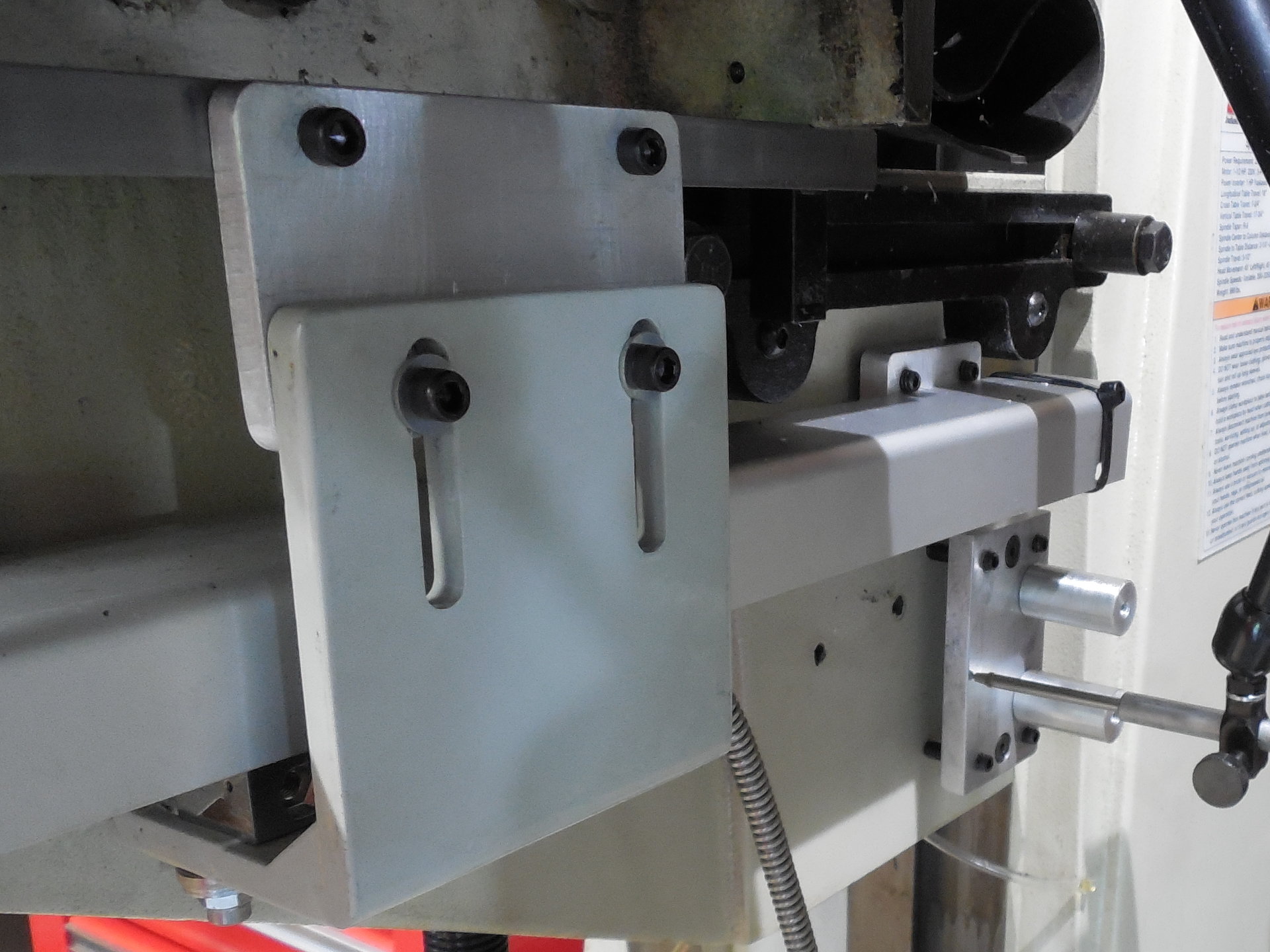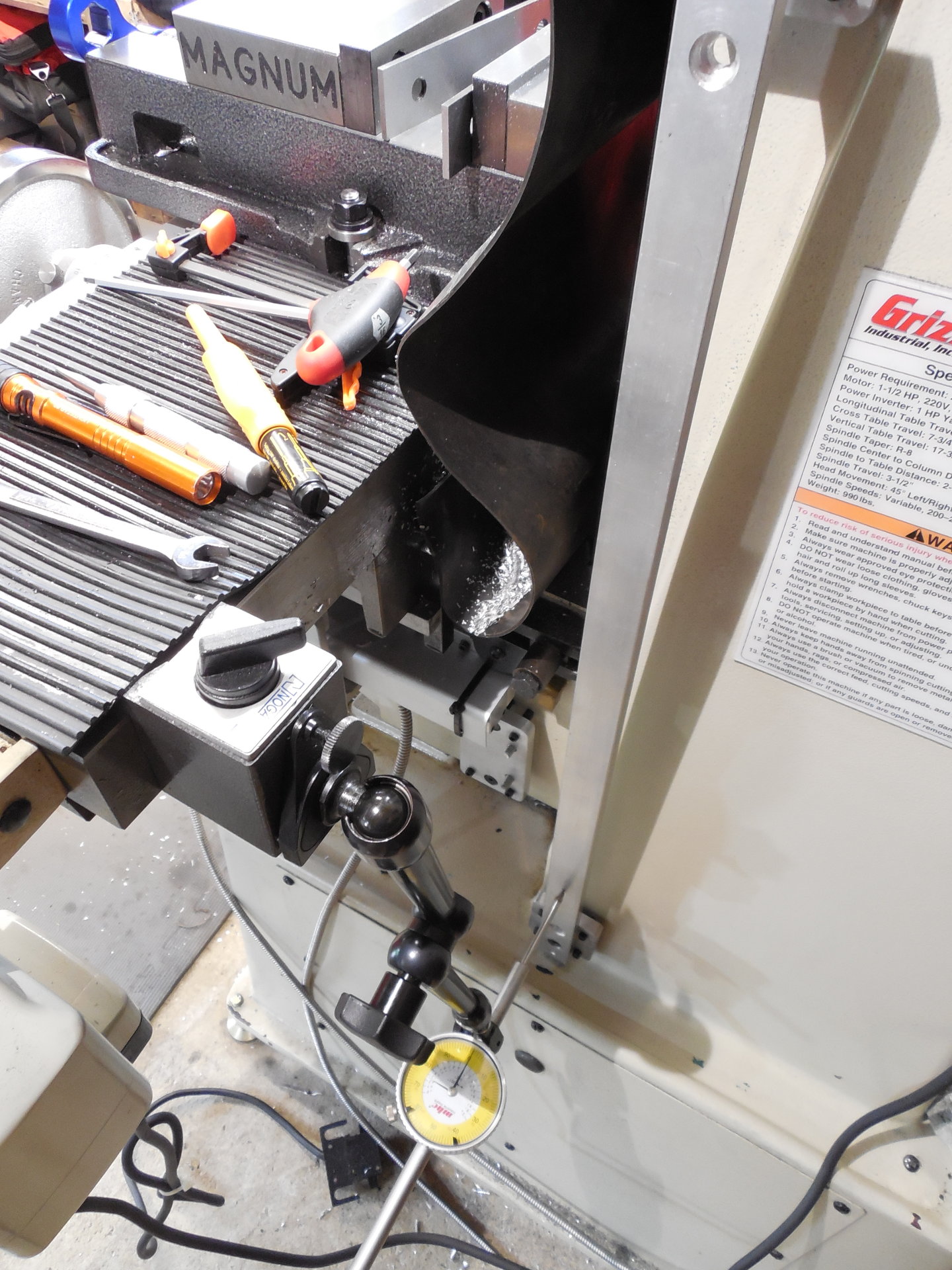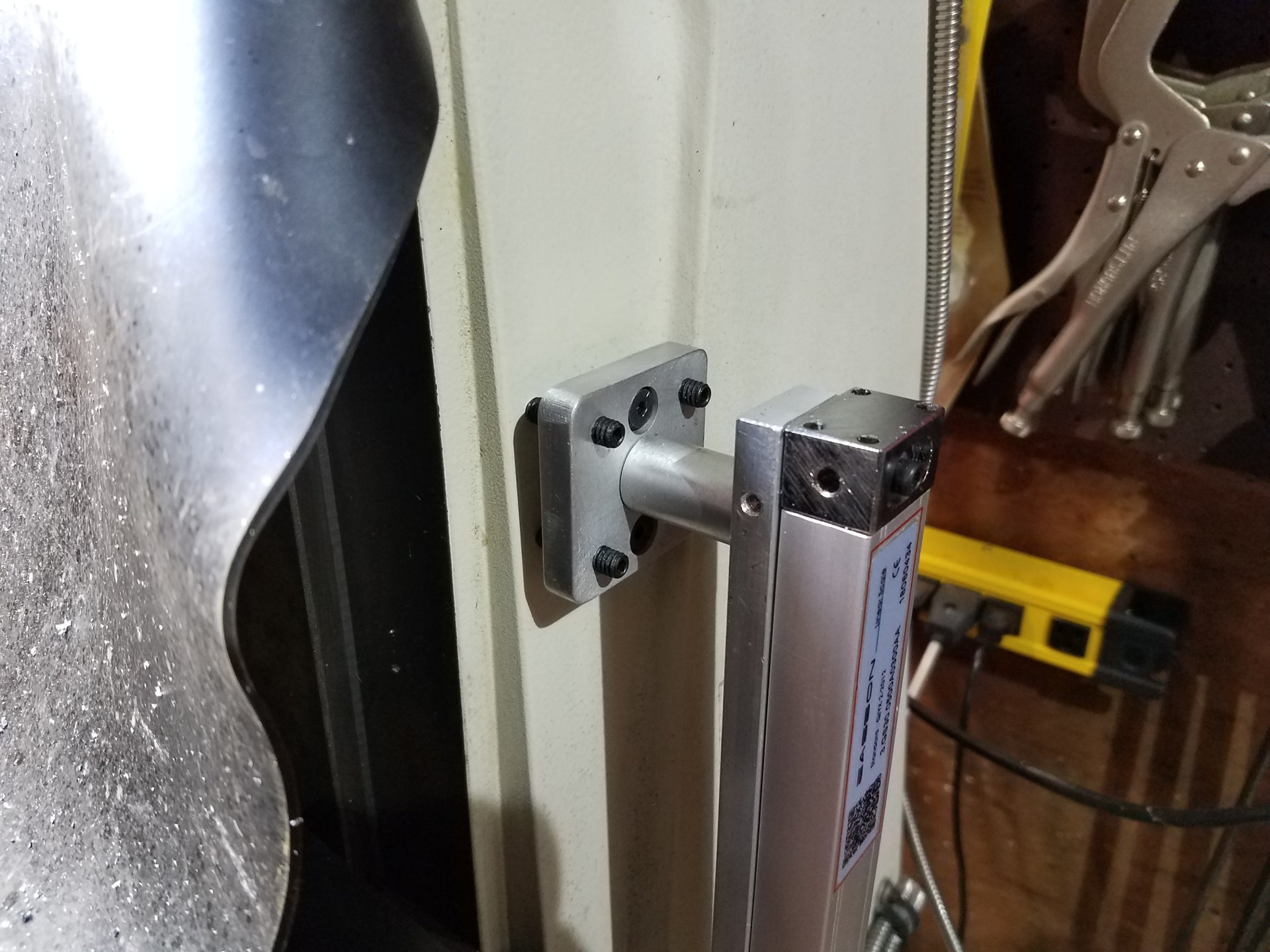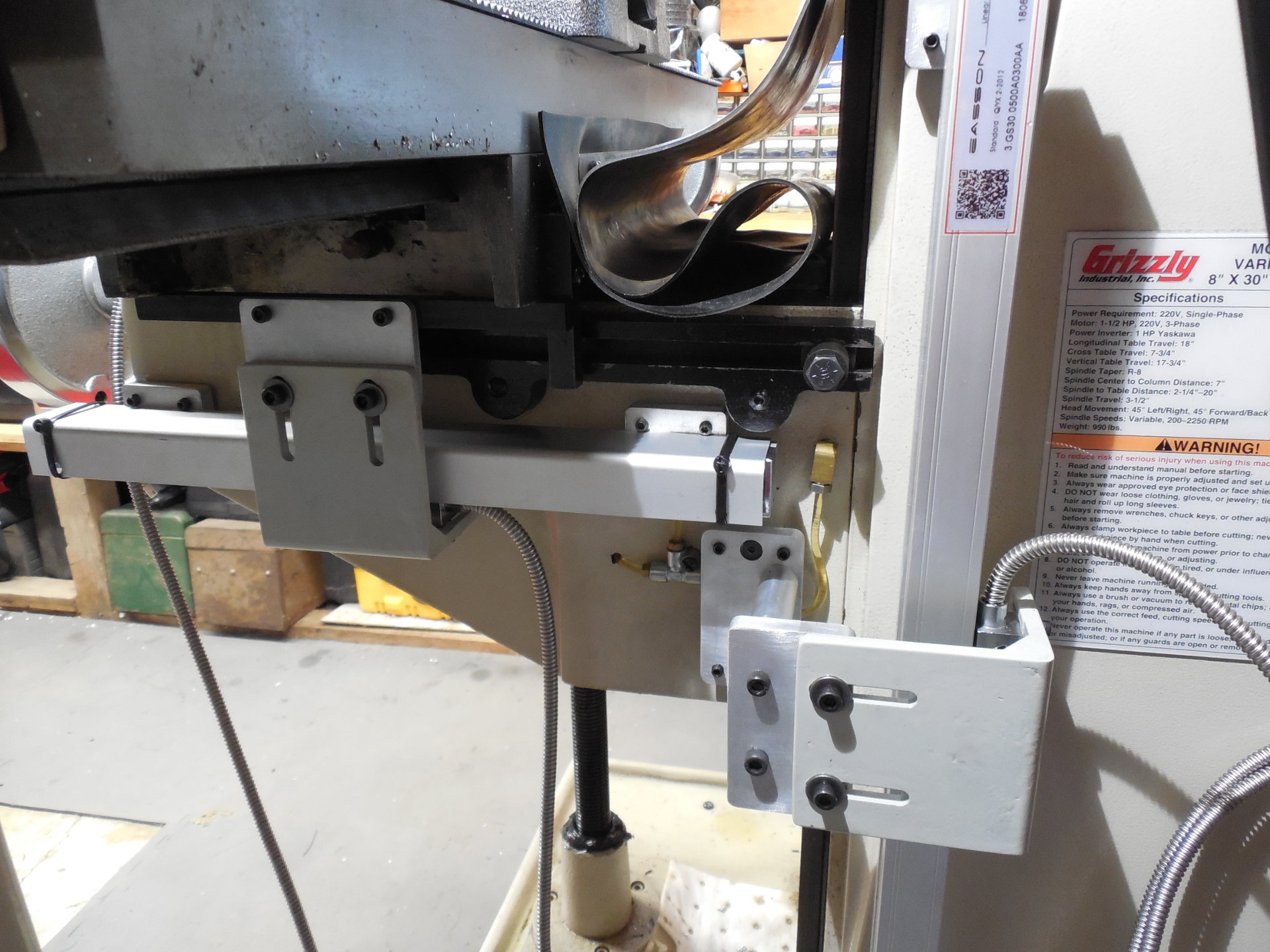For a mill, the DRO Z axis configuration seems to come in a few flavors. Some installations attach the scale to the quill, while others measure the movement of the knee. Some complicated setups can use scales on both the quill and knee at the same time so that the final Z axis number displayed on the controller is a combination of both scales. For this Grizzly G0678 mill, I will use one scale to measure the knee movement.
It was a pretty easy decision to make as that's how I've been operating the mill for several years now: using the dial on the knee to measure precise Z movements. It just works better on this machine. It also doesn't hurt that the knee has over 17 inches of movement, compared to the rather small 3 1/2 inches of quill travel. Also, when buying the DRO system, a long scale is the same price as a short one, so why not use the scale to measure the much longer movement?

Here you can see me sweeping the mounting pad for the scale's reading head for the knee. Because of the column's tapered shape, the pad attachment point will need extensions to connect to the reading head so threaded spacers were made on the lathe.

The bottom mounting pad for the scale has been installed on the column and the scale backing plate is being swept with a dial indicator.

It was well worth it to make this Z Socket adapter as described in an another post. Let a cordless screwdriver do all the monotonous cranking of the knee up and down during the DRO installation!

This is the top mounting pad with a threaded spacer similar to what was used for the scale's reading head.

The completed Z axis installation. Originally it was intended for the bracket to reach under the scale to move the reading head. Unfortunately, the Z axis movement would have been limited as the bracket would hit the bottom mounting pad before the knee hit the travel stop. Of course, limiting axis movement was completely unacceptable, so the reach over method as shown here was used and the entire Z axis range was available again. Luckily the mounting pads are so robustly attached to the mill that even the additional length of the threaded spacers did not cause any unwanted movement in the attachment brackets that would affect the scale's accuracy.
The kit's cover for the Z axis scale ended up being used on the X axis and a new one, which was just a thin aluminum angle piece, was never ordered. I don't really see a reason one is needed as this scale is located safely towards the back of the mill.